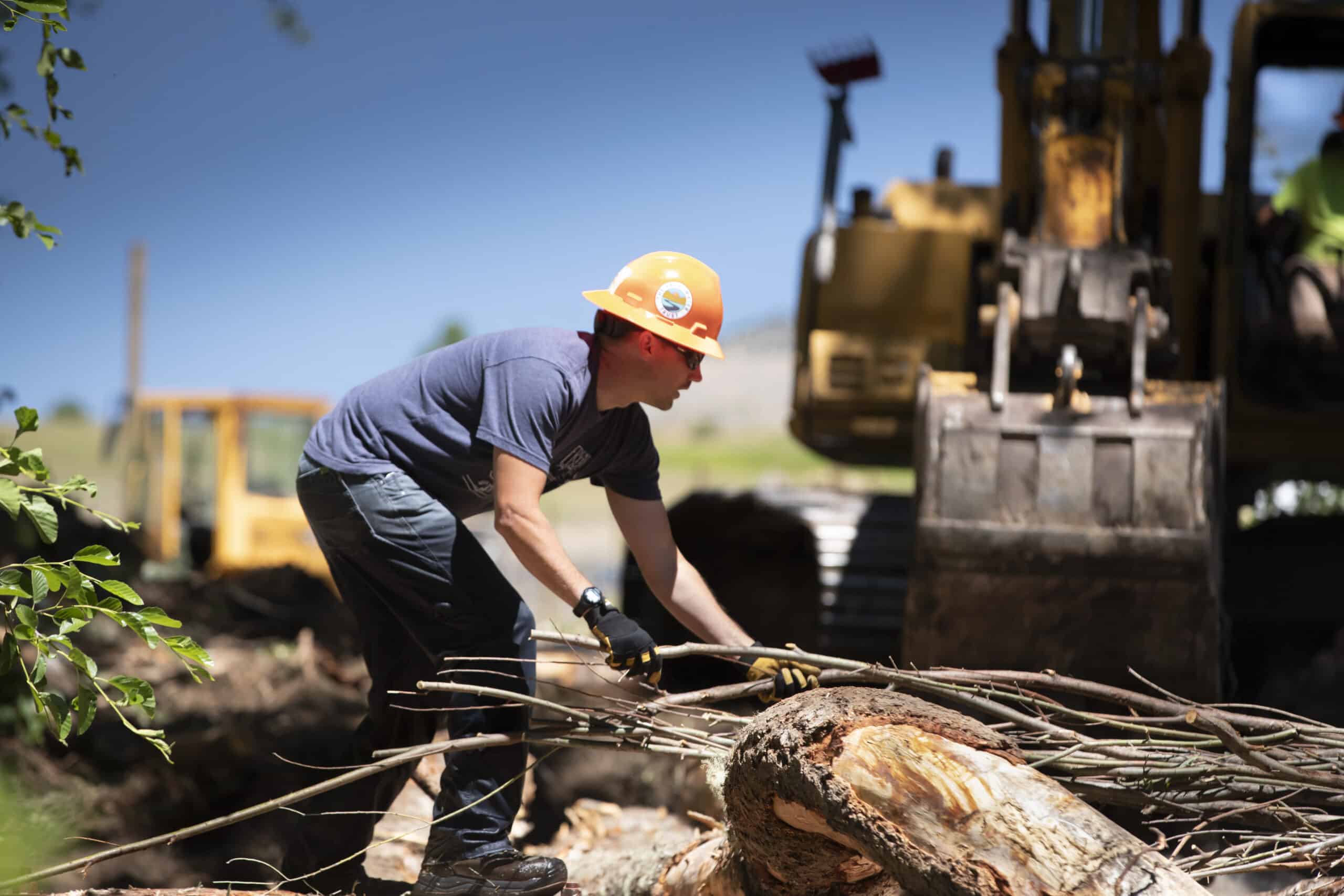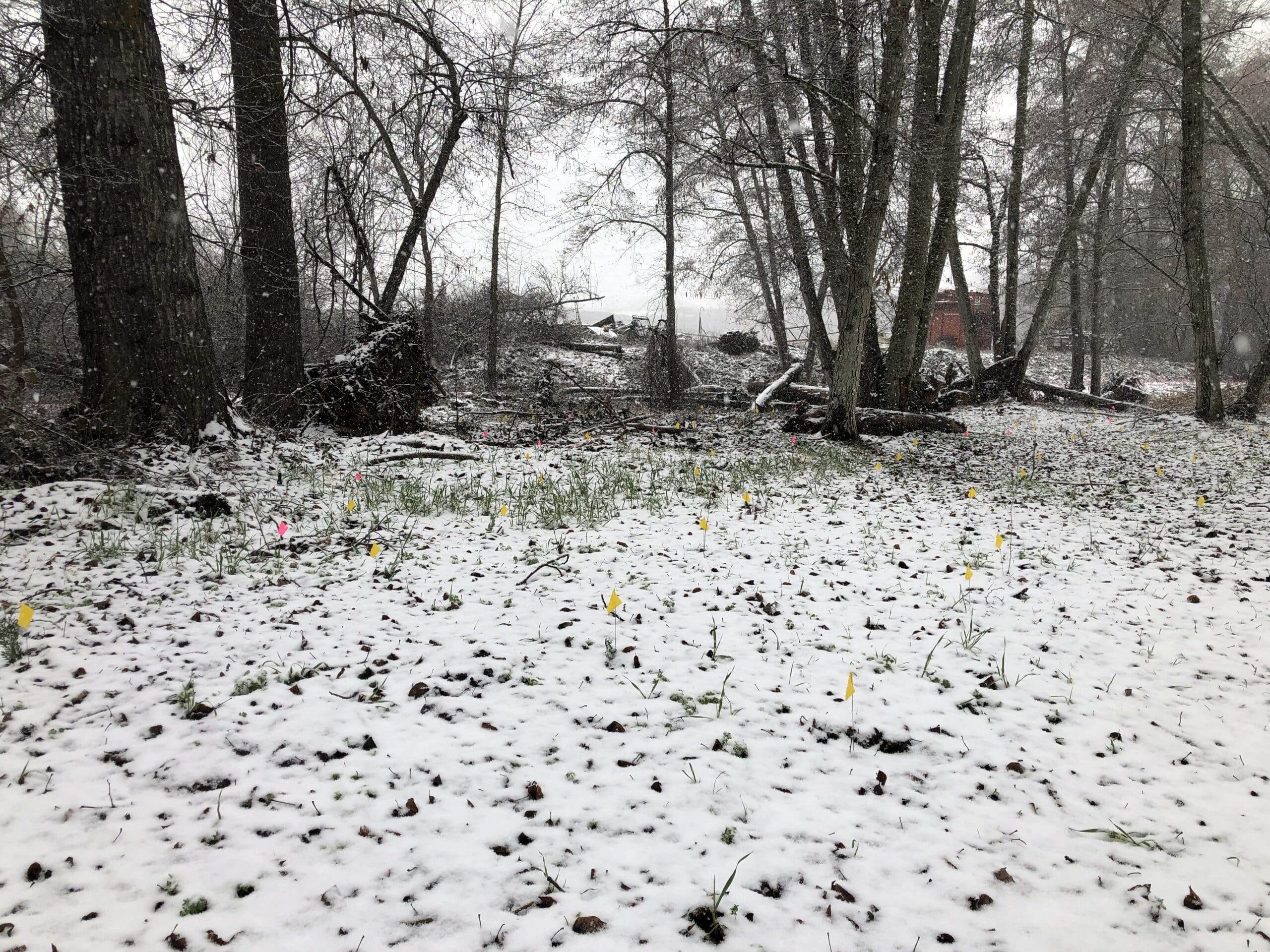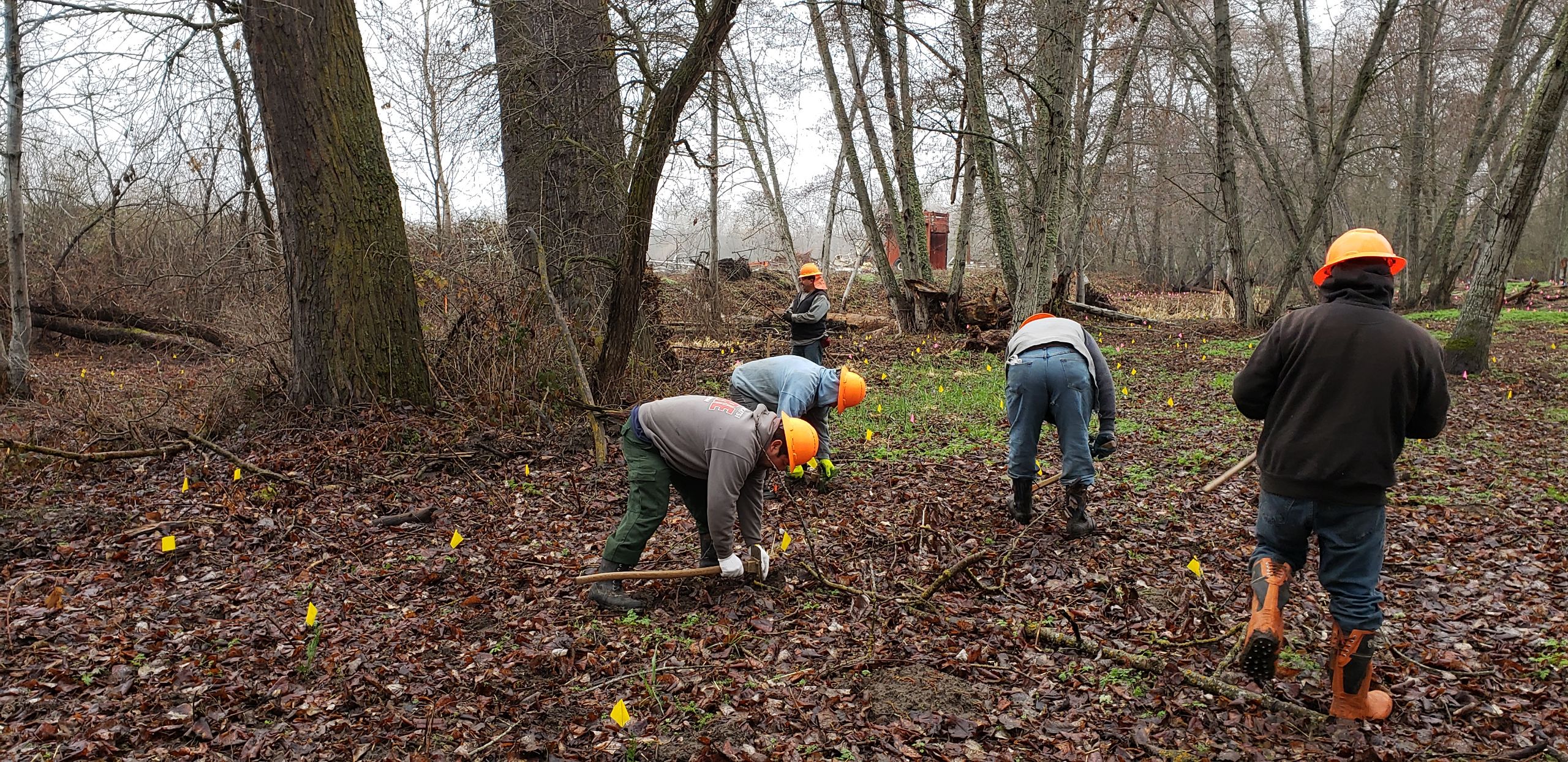Trees are Bear Creek Necessities
Last week, The Freshwater Trust (TFT), in partnership with the Bureau of Reclamation (BREC), a private landowner, and Lomakatsi Restoration Project started a new planting project along Bear Creek.
Bear Creek is a 29-mile-long tributary, draining approximately 400 square miles of the Rogue Valley and running through some of the most urbanized areas of southwest Oregon, including the cities of Medford, Talent, Phoenix and Central Point. The Rogue is one of the strongest producers of salmon and steelhead in the region.
Since 2014, TFT has designed and built more than 200 large wood structures in in the basin on behalf of BREC to benefit native fish species. A total of 75 have been along the upstream section of Bear Creek, just outside Ashland.
“This section of Bear Creek is a great place to work, because there many side channels and connected floodplains,” said Lance Wyss, TFT Restoration Project Manager. “These are really important areas for fish and wildlife habitats and maintaining a healthy streamside forest.”

Lance Wyss, TFT Restoration Project Manager, working on a large wood project on Bear Creek in July of 2018.
When the structures are installed, some of the land can be disturbed, prompting TFT to install new plantings. Much of the land running along the creek is also overrun with thick swaths of invasive blackberry and English ivy, which crowd out critical native plants.
On a snowy February morning, Katelyn Detweiler and Lance Wyss of TFT began restoring six new acres on one of the largest family farms in the region. By the time the project is finished at the end of this month, more than 6,000 new trees and shrubs will be in the ground.

Site of where native trees and shrubs will be planted.
“New planting projects like this are always exciting,” said Detweiler. “Everyone’s working really efficiently, so you can see how the site changes in a matter of hours as one plant is put in after another.”
Detweiler & Wyss have chosen a mix of White Alder, Big Leaf Maple, Oregon Ash, Black Cottonwood, Wild Mock Orange, Pacific Ninebark and more, to replace the blackberry.
“I’m a botanist by trade, so while I’m of course invested in seeing this creek improve for fish, I’m also invested in watching this new native plant community be reestablished again,” said Detweiler.
The new streamside forest will provide shade, sequester carbon, filter nutrients, stabilize the riverbank, and provide valuable habitat for pollinators and other wildlife. Beavers have already been witnessed along the site.
Since 2012, TFT has implemented more than two dozen similar restoration projects in the basin.
“The hundreds of thousands of plants we’ve put in the ground here in southern Oregon have so many incredible benefits beyond just improving the quality of the river,” she said. “They’re changing and benefiting entire ecosystems.”

Restoration professionals working on prepping the site for planting.
Enjoying Streamside?
This is a space of insight and commentary on how people, business, data and technology shape and impact the world of water. Subscribe and stay up-to-date.
Subscribe- Year in Review: 2023 Highlights
By Ben Wyatt - Report: Leveraging Analytics & Funding for Restoration
By Joe Whitworth - Report: Transparency & Transformational Change
By Joe Whitworth - On-the-Ground Action – Made Possible By You
By Haley Walker - A Report Representing Momentum
By Joe Whitworth

